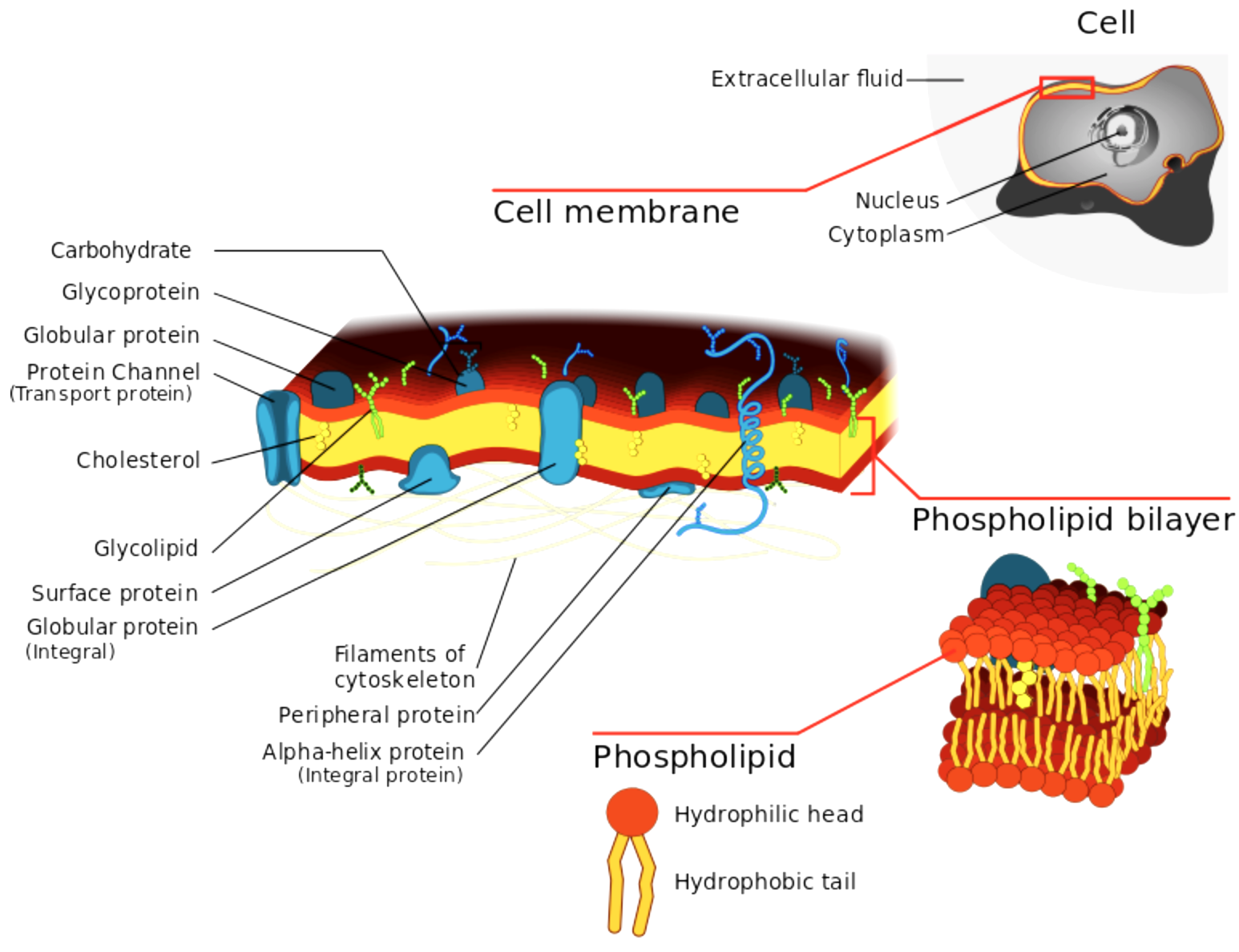
Average thickness of plasmalemma is
(a) 0.25nm $2.5 { A }^{ \circ }$
(b) 2.5nm $25{ A }^{ \circ }$
(c) 0.75nm $7.5{ A }^{ \circ }$
(d) 7.5nm $75{ A }^{ \circ }$
Answer
471.3k+ views
Hint: The thickness of a cell membrane is now stated to be from three to 10 nanometers supported by the advanced technology of today. With the microscope, the cell membrane is seen as a continuing, thin double line with globular proteins embedded throughout.
Complete Step by step answer:
The plasmalemma is also a phospholipid bilayer that are selectively permeable membranes which separate them within the cells (cell organelles and cytoplasm) from the surface environment or the extracellular space.

The cell membrane or plasmalemma is about 7.5 nm –10 nm ($75 \ A^\circ$) in thickness with 2 layers of lipid molecules (bilayer) which have different types of proteins.
So, the correct answer is, ‘ 7.5nm $75{ A }^{ \circ }$’.
Additional Information:
The plasma membrane is also known as the cell membrane and it protects the cell. In the plant cells and bacterial cell, there is another layer of rigid protective covering outside the plasma membrane, called the cell wall.
Lipids (phospholipids and cholesterol), proteins, and carbohydrates are the main components of the cell membrane.
To show the arrangement of proteins, carbohydrates, and fats in the plasma membrane, various scientists have suggested different theories. Out of these, the most appreciable one was the Fluid Mosaic model proposed by Singer and Nicolson in 1972.
It contains a lipid bilayer (a globular protein molecule), including cholesterols that sit between phospholipids to maintain their fluidity at various temperatures.
Globular protein is of two types: (a) peripheral extrinsic protein- This is soluble and lies outside the lipid layer. (b) integral protein- This is insoluble and pierces one or both layers of phospholipids.
Note:
- Robert Hooke discovered the cell membrane.
- The most basic role of the plasma membrane is to define the borders of the cell and keep it functional.
- The plasma membrane is selectively permeable, it allows only some substances to pass through, but not others.
Complete Step by step answer:
The plasmalemma is also a phospholipid bilayer that are selectively permeable membranes which separate them within the cells (cell organelles and cytoplasm) from the surface environment or the extracellular space.

The cell membrane or plasmalemma is about 7.5 nm –10 nm ($75 \ A^\circ$) in thickness with 2 layers of lipid molecules (bilayer) which have different types of proteins.
So, the correct answer is, ‘ 7.5nm $75{ A }^{ \circ }$’.
Additional Information:
The plasma membrane is also known as the cell membrane and it protects the cell. In the plant cells and bacterial cell, there is another layer of rigid protective covering outside the plasma membrane, called the cell wall.
Lipids (phospholipids and cholesterol), proteins, and carbohydrates are the main components of the cell membrane.
To show the arrangement of proteins, carbohydrates, and fats in the plasma membrane, various scientists have suggested different theories. Out of these, the most appreciable one was the Fluid Mosaic model proposed by Singer and Nicolson in 1972.
It contains a lipid bilayer (a globular protein molecule), including cholesterols that sit between phospholipids to maintain their fluidity at various temperatures.
Globular protein is of two types: (a) peripheral extrinsic protein- This is soluble and lies outside the lipid layer. (b) integral protein- This is insoluble and pierces one or both layers of phospholipids.
Note:
- Robert Hooke discovered the cell membrane.
- The most basic role of the plasma membrane is to define the borders of the cell and keep it functional.
- The plasma membrane is selectively permeable, it allows only some substances to pass through, but not others.
Recently Updated Pages
Master Class 11 Accountancy: Engaging Questions & Answers for Success

Express the following as a fraction and simplify a class 7 maths CBSE

The length and width of a rectangle are in ratio of class 7 maths CBSE

The ratio of the income to the expenditure of a family class 7 maths CBSE

How do you write 025 million in scientific notatio class 7 maths CBSE

How do you convert 295 meters per second to kilometers class 7 maths CBSE

Trending doubts
10 examples of friction in our daily life

One Metric ton is equal to kg A 10000 B 1000 C 100 class 11 physics CBSE

Difference Between Prokaryotic Cells and Eukaryotic Cells

State and prove Bernoullis theorem class 11 physics CBSE

What organs are located on the left side of your body class 11 biology CBSE

Write down 5 differences between Ntype and Ptype s class 11 physics CBSE




